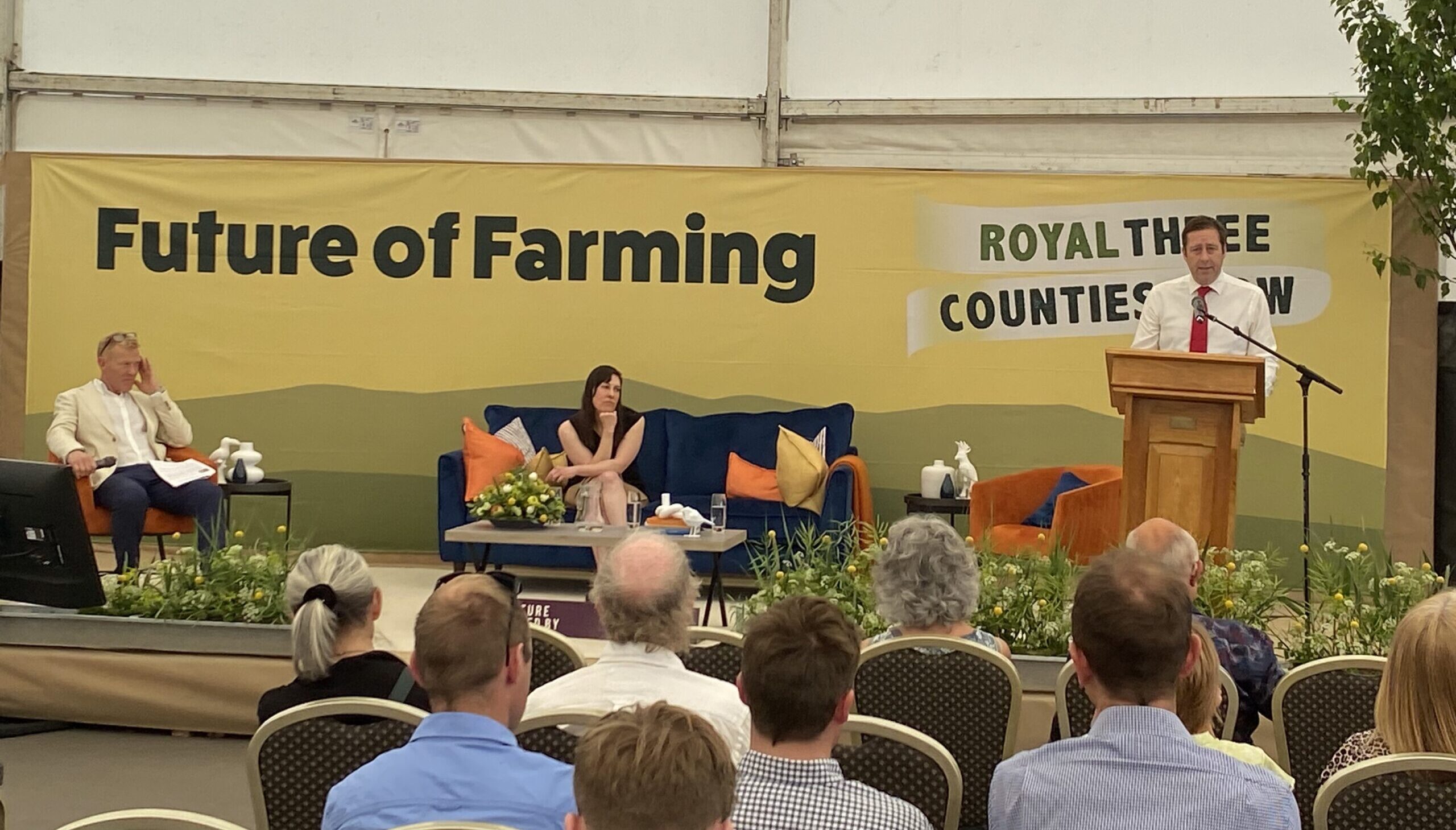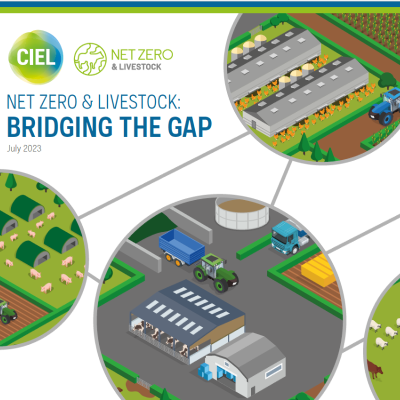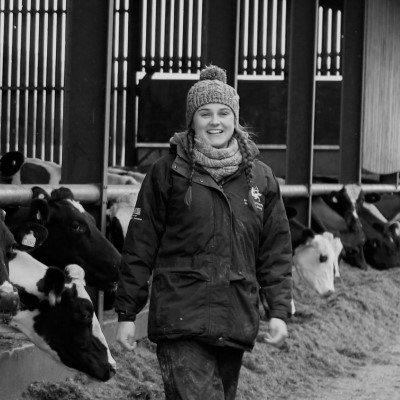CIEL | Blog: Achieving Net Zero in Agriculture
Phil Bicknell

With the team getting out and about at various industry events in recent weeks, Net Zero and Sustainability continue to be key topics. Phil Bicknell, Director of CIEL reflects on key discussion points from a range of conversations.
Tackling the Net Zero challenge – Still a hot topic?
Agriculture is far from the biggest contributor to emissions, but the current rate of change, particularly on methane, means we face scrutiny. Agriculture is in a unique position to be part of the solution, with enormous opportunities to reduce emissions and store carbon through land-use. It’s not just greenhouse gases (GHGs) where emissions are under scrutiny, ammonia emissions are an area where the UK (and Europe) isn’t making the inroads needed.
There’s a range of regulation that’s aiming to tackle the ammonia challenge: The commitments in the Clean Air Strategy are now legally binding in the Clean Air Act. There’s already permit requirements on pig and poultry units over a certain size, and plans are to extend into dairy and intensive beef farming in the next couple of years.
However, regulation can be a blunt tool for driving change. In my view, the best results are seen when there’s proactive change, where people can take responsibility and grasp the opportunity. I don’t think any of us want to see the kind of thing that’s being suggested in the Netherlands and more recently in Ireland – where reducing stock numbers is presented as the solution. Those arbitrary reductions are simplistic solutions and counterproductive in my view. They risk adding to the problem rather than encouraging progress. Similarly, offshoring and offsetting emissions feels disingenuous. It’s good to see some of these schemes come under a bit more scrutiny.
A question I’ve often been asked over the last few months relates to where sustainability goals feature in a landscape of rising input costs for farmers and rapid food inflation for shoppers.
Yes, the livestock industry faces some very significant challenges, but I believe the sustainability challenge will remain, as will the expectation that the agrifood sector needs to take positive action.
Delivering science and evidence – What Works?
CIEL has commissioned a series of reports in recent years designed to support the UK livestock sector as it strives to achieve its Net Zero ambitions. The focus of our first Net Zero & Livestock report, released in 2020 was to provide the latest, science-based, independent evidence on livestock systems and their contribution to emissions, to better understand where we are now and how we can progress.
We built on that with our second Net Zero & Livestock report, released in April 2022, identifying key actions farmers can take now, or in the near future to reduce their carbon footprint and reduce emissions. This really did focus on what works at farm level, presenting a range of options across different livestock sectors, giving pointers for anyone looking to tackle emissions in areas relating to feed & fodder, genetics, animal health, and manure & fertiliser.
Taking Action – Potential Starting Points
-
Measure what you do
Understanding where you are currently, how you compare, and identifying potential areas for action is the obvious starting point. That applies to carbon just as it does to any other aspect of farm performance. There’s no shortage of tools and calculators to help, but appreciate this can be viewed as a potential minefield. When I wanted to explore emissions on the family farm, I picked one and entered my data. And if an improved carbon calculator comes onto the market, my view is that I’ve got the data ready to go. As an industry, I’m conscious that more farm-level data can be used to challenge headline assumptions. We therefore have a vested interest in capturing actual data.
Currently, we see global, regional and national figures used when it comes to calculations. Policy makers need to recognise the potentially misleading nature of assumptions and methodologies when assessing agriculture’s performance. In fact, without going into the technicalities of Global Warming Potential (GWP) measures for different GHG emissions, it was great to see the NFU back an alternative for measuring methane.
- On-farm change requires collective effort
Over the last year, we’ve seen more businesses from across the supply chain roll-out various sustainability initiatives with farmer suppliers. This is a positive development and a reminder that farm businesses aren’t alone in tackling sustainability challenges.
I know that’s not a universal view. Indeed, I recently spoke to a farmer who’d been approached with the option of having a carbon footprint done for him and they viewed it as “an extra bit of admin.” My take is a bit different – it’s someone who’s willing to pay for something that helps you better understand farm your business, helps pinpoint key focus areas and actions to take. More broadly, that feeds into being able to tell a positive story about your shared supply chain.
- Stop searching for the silver bullet
When it comes to tackling the net zero challenge, it’s important to remember that there’s no quick wins or obvious solutions for the industry. And that’s something that’s worth repeating regularly. Indeed, it’s something that commentators who offer their views on food and farming often forget. Improving efficiency is the most effective way for most farmers to reduce their carbon footprint. This is far from straightforward and it’s about a focus on marginal gains. But there is a significant overlap between the environmental performance and the business performance of our farm businesses.
What next?
Silver bullets might not be in abundance, but new technologies and approaches do offer potential gains. Indeed, CIEL has been looking at new innovation and this is the focus of the latest CIEL report, Net Zero & Livestock: Bridging the Gap. This is now available to download from the CIEL Website.


Phil Bicknell, Director of CIEL
After joining the CIEL the team in 2021 as Head of business development, Phil became director in April 2023. Continuing to steer CIEL’s strategic development to ensure we successfully deliver on our vision to be the front door to research and innovation for the livestock and aquaculture sectors. In addition to leading the team and operations at CIEL.
Growing up on the family livestock farm, Phil is an agricultural economics graduate from the University of Reading and his career includes a range of agri-food roles.
Phil led the 50 strong market intelligence team at the Agricultural and Horticultural Development Board, equipping farmers and processors with the insight to manage market volatility, profitability and policy change. He was also chief economist at the National Farmers Union, spearheading the evidence to support a range of lobbying activity. Phil’s other roles include specialising in agri-trade issues at the US Department of Agriculture and advising a range of agribusiness clients with Bidwells.







